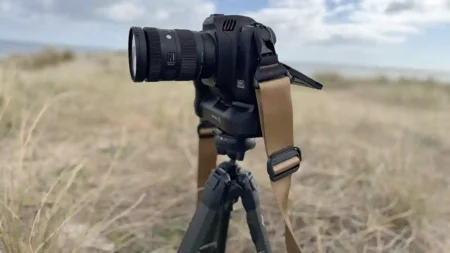It’s no big secret that many people often find themselves sticking with the first camera brand they purchase. Unless something is drastically incompatible with the user, it becomes harder and harder to change once you’ve invested a certain amount into lenses and equipment.
Despite this, some people do still make the full transition into a new system.
Having started my journey into photography with Canon, I could never imagine myself changing or needing a new system. It felt as if I had everything I needed to progress in photography, so when given the opportunity to try out the Olympus OMD EM-1, I admit to being skeptical at first.
I couldn’t see what I would need a new system for or how it would benefit me in any way. But rather than be stubborn I decided it was best to give it a shot!
I will admit my skepticism disappeared quickly. I instantly found myself less limited by the weight of my equipment, easily carrying my entire set of lenses with me everywhere I went.
Although the weight of the Canon system was merely an irritant to me, it also made it much more difficult to capture some images unless I had a tripod, adding a further weight restriction. The ability to shoot high and low was immediately improved with the use of the Olympus tilting screen.
SEE MORE: iPhone 7 Plus vs Canon EOS 5D Mark IV image quality test

Due to the size of the Four Thirds type sensor in the Olympus camera, the greater depth of field meant that my images were almost always tack sharp, with an extremely fast and accurate autofocus which rarely missed its mark.
Paired with the 5 axis image stabiliser, this camera was built to produce sharp images, something which is very important for me.
Like any system however, it had it’s disadvantages; I found the low light performance was a challenge along with the AF performance on moving subjects.
The focal length reach was limiting when shooting wildlife at a distance, with 300mm being Olympus’ longest lens to date (600mm equivalent) and with a digital viewfinder I found the battery didn’t last long.
With this in mind, you can imagine my excitement when the new Olympus OM-D EM-1 Mark II was announced, with the AF and ISO performance promising to show vast improvements, plus a new battery. It was refreshing to see that Olympus had listened to the feedback of the users and addressed those limitations.
Immediately I could recognise that the MKII was a completely new beast. The ISO performance was significantly improved, not losing the fine detail in low light which the MKI had struggled with on occasion.
The continuous AF was also showing vast improvements, although I’m yet to fully test the capabilities of it. I found I was able to work off a single battery over the space of 6 hours of continuous shooting which is perfect! The quality of image that the camera could produce was vastly improved.
SEE MORE: Olympus OM-D E-M1 II vs OM-D E-M1: key differences explained

So I guess the question you may still have is would I fully change systems? The answer may surprise you but no, I wouldn’t. I recognise the advantages and disadvantages of both systems I own, but I think it’s actually better to use both systems side by side.
The Canon system still excels when I need that extra reach or I’m shooting in challenging low light conditions, as I’m able to push the ISO further. However the Olympus shines when I need that flexibility or ease of use.
These days I usually go out with both my Olympus and the Canon, giving me a much greater range of opportunities.
READ MORE
Hands-on Olympus OM-D E-M1 Mark II review
Hands-on Canon 5D Mark IV review



